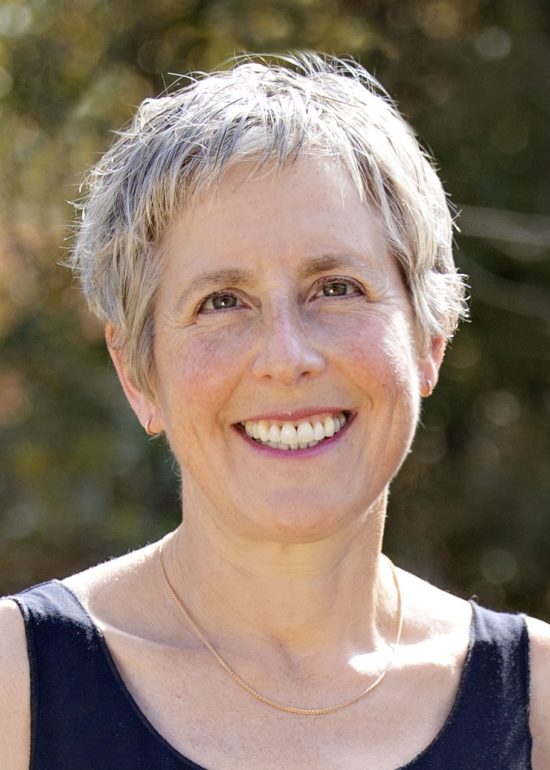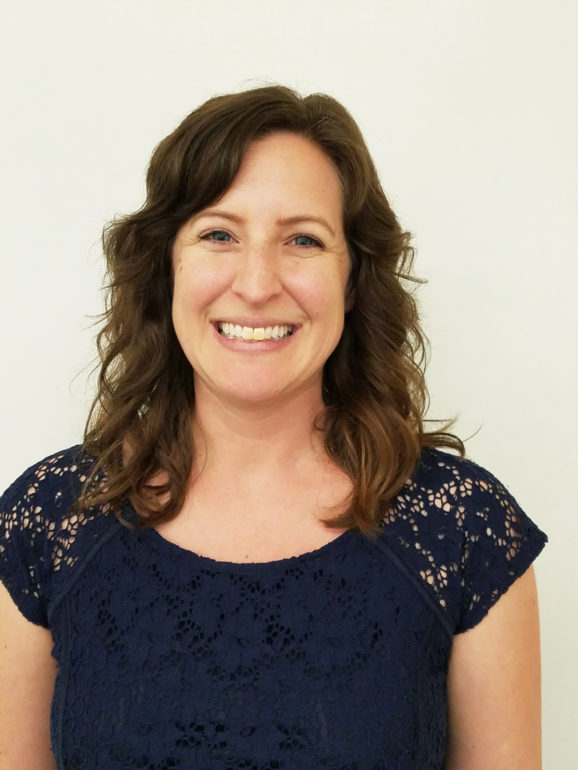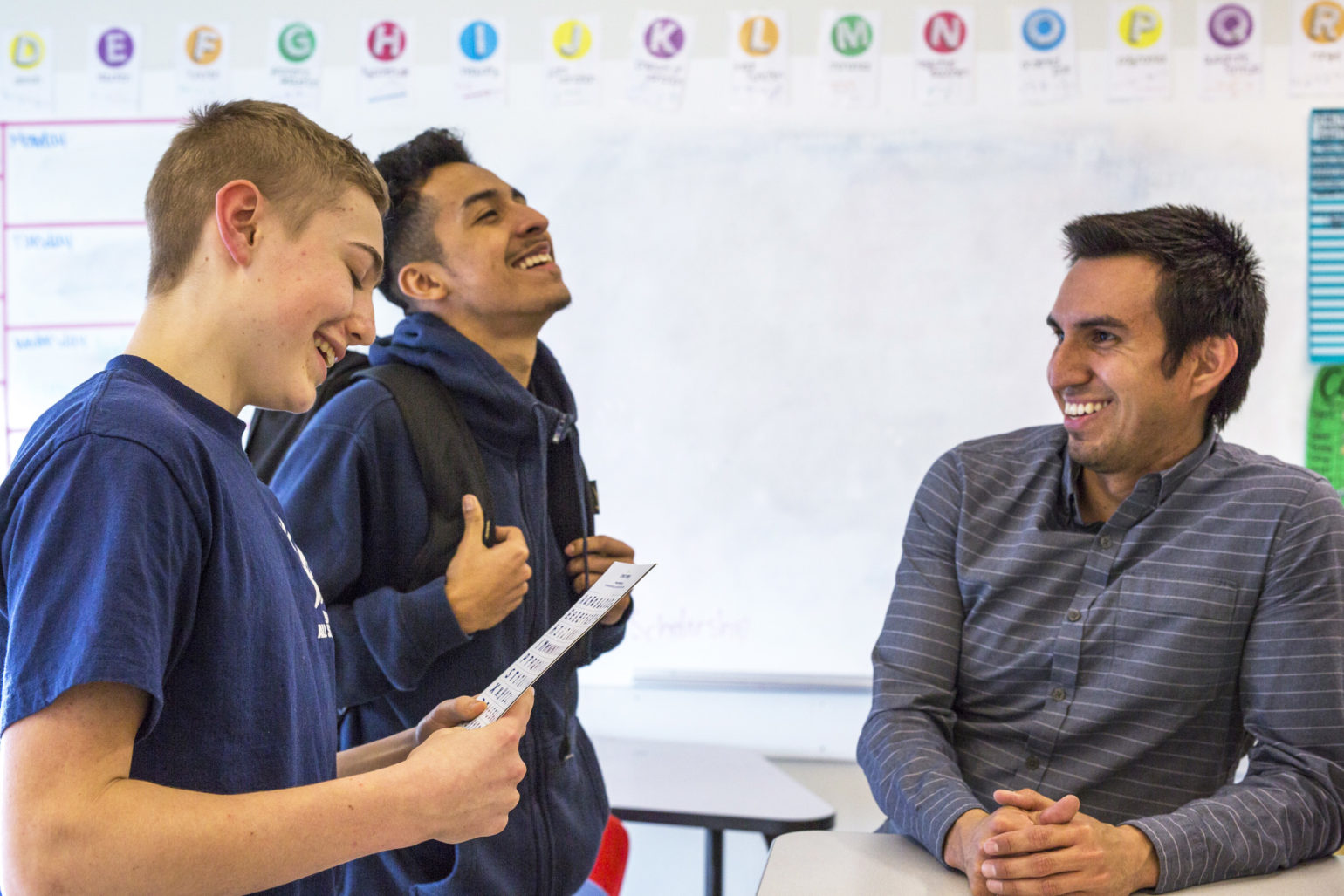No one doubts the significant impact of the global pandemic on education. It’s caused two and half years of disruption, learning loss and the recognition of inequity in the classroom. Coupled with a growing mental health crisis among children and a concern about school safety, the state of education may look dire, but there are plenty of individuals who see these challenges as cause to reimagine how children learn. These eight innovators based in Marin County and the wider Bay Area who are making a difference here at home and around the country.
Jody Lewen, Ph.D.
Founder and President, Mount Tamalpais College

Jody Lewen, Ph.D., first entered San Quentin prison in 1999 as a volunteer instructor in an educational outreach program to inmates. As a graduate student in the rhetoric department at U.C. Berkeley, Lewen was teaching classes on campus and working on her dissertation. “I started teaching at San Quentin out of interest and excitement at the idea of being able to deliver quality education to people who didn’t necessarily have it, but it was something to do on the side,” Lewen recalls. “My plan was to finish my dissertation and go into the conventional job market. Then I fell in love with the program and got very engaged.”
When the program coordinator announced he was leaving, and no one stepped up to keep it going, Lewen decided to take over. “I saw how little anybody cared what happened to people in prison,” she says. “That’s a precarious situation for any group of humans.”

Lewen wondered what the program could become if there was enough manpower and resources to support it, and decided to found the nonprofit Prison University Project to raise funds for expansion. As an increasing number of inmates enrolled in classes, the Prison University Project became the infrastructure for a robust academic program offering a general education associate of arts degree and intensive college preparatory courses. In the past two decades, nearly 4,000 students have participated.

Recently, the Prison University Project became an accredited independent liberal arts college renamed Mount Tamalpais College, and Lewen has been recognized for her efforts as the recipient of the National Humanities Medal, the James Irvine Foundation Leadership Award and the Peter E. Haas Public Service Award.
“We’re letting people who have been marginalized, degraded and left for dead know that somebody does care about them,” Lewen says. “I derive so much satisfaction from feeling useful. Seeing the good we can do just by showing up and taking the time to give our students a high-quality education – that’s fuel for me.”
Glen Tripp
Founder and CEO, Galileo Learning

As a student, Galileo Learning founder and CEO Glen Tripp appreciated a traditional academic education in a traditional classroom, yet he also recognized that the approach doesn’t work for every student. He built Galileo Learning’s seasonal camps on the premise that hands-on, project-based learning has the potential to bring meaning to a child’s education in a transformative way.
Oakland-based Tripp recalls two experiences in high school that influenced the development of Galileo Learning. “I was the editor of the school newspaper in 1986 when we transitioned from traditional publishing to desktop publishing,” he says. “Working together with a group of motivated peers who wanted to use new technology to publish a quality newspaper was transformative for me. It taught me how much one can learn when you’re engaged in projects that are meaningful to you. At the same time, I was in Boy Scouts with a Scout Master who believed that kids should run the troop. It was so incredible as a young person to have adults believe in you and empower you to be the ones in charge of the program.

“I learned through these experiences how joyful, fun, stimulating, and inspirational it is to come together with a group of people and create something that you care about. Experiential education and project-based learning are so effective for so many kids in a way that traditional classroom learning will always pale in comparison.”
Since its founding in 2001, 600,000 students have attended Galileo programs. More than 2,500 Galileo educators serve more than 50,000 kids annually at 67 sites across the country. The project-based science, arts, technology and engineering experiences have been influenced by the Institute of Design at Stanford University and the Tech Museum of Innovation in San Jose.
When Tripp, a graduate of Stanford University, reflected on his own education, he realized that while math and reading are foundational skills every student needs, there’s so much more to learn. “I believe creativity and innovation are going to be the most valuable skills in the next phase of our world’s development,” he says.
James Hughes
Director of Community Action, English Teacher Marin Academy

When the 10th grade students in James Hughes’s English class at Marin Academy read Gabriel Garcia Marquez’s Chronicle of a Death Foretold, they learn more than just the novella. “This story focuses on a sense of community responsibility,” Hughes notes. “It’s a great opportunity for us to explore what our responsibility to the community is.”
Hughes is entering his fifth year as an English teacher and director of community action at the independent school in San Rafael. “I chose to come to this school because it’s pushing the boundaries of education beyond the traditional four walls of a classroom,” he says. “We’re connecting kids to the community, and that’s so rewarding.”
After reflecting on the content of the book, the sophomores learn about different local organizations where they can volunteer to meet needs in Marin County. “It’s about thinking deeply and then getting experience by going out in the community to work with groups like City Impact or support homeless women who are under-resourced,” Hughes says.

While much of Marin Academy’s service learning is rooted in academic courses and classroom work, the school’s mission to “think, question and create in an environment of encouragement and compassion” leads to more far-reaching programming. Hughes oversees the Community Action Leadership Council, led by sophomores, juniors and seniors with a desire to broaden the school’s social impact on the community, the Youth Grants Board, which awards funds to other area schools engaged in service, and the Conference on Democracy, an annual one-day event that brings local, national and global luminaries together to share their professional perspectives and personal experiences.
“Students at independent schools have incredible opportunities and resources,” Hughes says. “I want to help them think deeply about how they access and harness those opportunities to make an impact in our world. Understanding social justice, racial justice and systemic inequities are so essential. To see the students grow into incredibly responsible, community-aware, active young adults — that’s what motivates my work.”
Denise Pope, Ph.D.
Cofounder, Challenge Success, Senior Lecturer, Stanford Graduate School of Education

Denise Pope, Ph.D., says it’s the students she interacts with who make her feel hopeful about the future of education, and as founder and executive director of Challenge Success, she meets a lot of them. “The students I talk to want to make changes,” she explains. “They’re articulate. They’re thrilled to have adults listen to them.”
At the same time, Pope acknowledges there’s a lot that needs fixing. “Right now, it’s mental health: stress, isolation, suicide ideation, anxiety and depression,” she says. “Of course, we want schools to hire more counselors, but we also need to look at the systems level to find solutions. What about the policies and practices is not allowing kids to thrive, be healthy or feel like they belong?”
Challenge Success has worked with educators, students and parents at more than 500 schools around the country to transform the student experience. “We help schools rethink what they’re doing to promote whole child wellness, real engagement with learning, excitement about coming to school, and joy,” she says.

As a student Pope loved school. She became a high school English teacher because of the positive relationships she’d had with her teachers, but found that her students were not as engaged in learning as she had been. “It really was not their fault,” Pope says. “A lot of things about the system weren’t working.”
This classroom experience spurred Pope to enroll in graduate school to figure out how to engage students more deeply. For her dissertation, she shadowed five students at a high-achieving suburban high school near Stanford University. “I thought I was observing a model school,” she says, “but what I found was students going through the motions, doing school like these little robots. They were stressed, getting ulcers, cheating and not sleeping. Even the adults were stressed. This model school was not producing kids who would thrive in college and beyond.
“I was just ringing an alarm bell, but when my dissertation was published, the head of the health center at Stanford told me that students coming out of this type of school end up in health centers. They asked me to create an intervention based on my research.”
Pope says there is no one-size-fits-all answer, but Challenge Success is helping make policy and program changes one school and one district at a time. ”This kind of change process is slow and laborious, but it’s sustainable,” she says.
Trisha Garlock
President, SchoolsRule-Marin

In 1981, when Trisha Garlock and her neighbor Penny Weiss started the foundation Kiddo! to support art and music programs in Mill Valley’s public schools, they thought they’d be out of business in five years. “The state was cutting school budgets because of Proposition 13, but we thought surely they would go back and realize their mistake and begin to fund schools properly again,” Garlock says. “It’s been 40 years though, and they still haven’t come to that realization.”
While Kiddo! was successfully raising funds for Mill Valley schools, Garlock realized students in the rest of Marin County didn’t have access to similar opportunities. “These programs are important,” she explains. “If we worked together through the entire county, we could support all of the kids, not just those in our district.”
Garlock retired from her position at Kiddo! in 2011 to join the newly formed SchoolsRule-Marin, a consortium of all the school foundations in Marin County, as the volunteer board chair. SchoolsRule-Marin supports four program areas: literacy, the arts, technology and health. “We set broad parameters and let the school foundations decide what programs they feel are the most needed for their students,” she says.
When the pandemic brought to light the inequality gap in one of the wealthiest counties in the country, SchoolsRule-Marin shifted focus to closing the achievement gap. “There are real pockets of inequality in our community that we need to address,” Garlock says.
SchoolsRule-Marin now funds an instrument rental scholarship program in Mill Valley and college counseling for students in San Rafael who cannot afford the service. They’re providing resources for Shoreline Public Schools to purchase books that reflect diversity and financing success centers for at-risk youth at Redwood and Tamalpais high schools, and supporting wellness centers at three area high schools.
“These wellness centers are extremely important in this post-Covid-19 period because kids are suffering emotionally, and they need a place to go for support where they feel safe,” she says.
While only 20% of Marin County’s residents are school-aged children, Garlock believes the community has “a collective responsibility to ensure that all schools have the resources they need to fully meet the needs of all their students.” For her efforts, Garlock was inducted into the Marin Women’s Hall of Fame in 2018.
Pam Lamcke
Executive Director, Marshall Teacher Residency

As executive director of the Marshall Teacher Residency at Summit Public Schools in Redwood City, Pam Lamcke designed a program to answer the question, “What would learning look like if we could train teachers from the beginning of their careers to take a different view of the classroom?” “The way school has looked for 100 years isn’t working anymore,” Lamcke says. “We started this program because we recognized a need for teachers to come into school with a less traditional mindset. We don’t believe in the one-size-fits-all classroom. We’re focused on personalized learning.”
Lamcke, who earned a master’s degree in education and a teaching credential from Stanford University and a master’s degree in educational leadership and an administrative credential from the UC Berkeley, brought more than 15 years of experience to her role training novice teachers. She developed the residency program in coordination with the Stanford Center for Assessment, Learning and Equity (SCALE) to include classroom practice, collaboration and mentorship.

“I know every one of the 122 teachers who have been through the program,” Lamcke reflects. “Knowing where these teachers started and what their values are, I really trust the future of education in their hands.”
Ninety percent of the first cohort of 24 teachers just completed their fourth year in the classroom. That rate of retention is higher than the national average. “We designed this program as a residency model because there’s a lot of research that tells us time spent apprenticing with an experienced teacher leads to stronger retention in the field,” Lamcke explains.
Like many educators, Lamcke is not only concerned about the shortage of teachers, but about the diversity of the teaching force. “The majority of teachers in the United States are white women, especially in California where our student population is different than that,” she say. “We intentionally designed the residency to consider how we can recruit, train and retain diverse teachers across all different demographic markers.
“For me, focusing on the next generation of teachers is the most important thing we can do. They not only are going to impact the students they have in front of them today, but over the course of their careers, they’re going to have a broader influence as school leaders and policy makers. That’s why we’re investing in them.”
Danish Kurani
Architect and Founder, Kurani

Danish Kurani, who has designed more than 100 educational spaces around the world, does not agree that schools become safer when buildings are hardened. He believes open, inviting spaces provide more security. “Architecture’s role in education isn’t to isolate or shield; it’s to make schools fertile ground for personal growth — places that foster social, psychological and emotional development,” he explains. “We need to soften the school’s boundary, making it more accessible and connected to people. Schools can, and should, be the heartbeat of the community. If we invite more adults on campus, it actually becomes a safer place.”
Although he’s designed many different types of structures, Kurani has focused on creating learning spaces since he opened his firm 10 years ago, which is based in Mountain View. His work includes Khan Lab School, Acton Academy East Bay, Black Girls Code and Google Code Next Lab. Kurani considers the school environment the missing link in the effort to improve education. “There are so many smart, dedicated people trying to cook up this meal called education,” he says. “They’ve got all the ingredients, but they’re forgetting the pot — the space. We can’t make the great meal called education unless we’ve got the pot where all these things mix well.”

Kurani emigrated from Pakistan to Georgia with his family when he was 3 years old. He chose to focus on architecture as a way to solve global problems. While pursuing his master’s degree in architecture and urban design at Harvard University, Kurani partnered with Ph.D. students at the Harvard Graduate School of Education and Boston Public Schools on his thesis, and recognized that education was the most proactive way to address universal concerns.
“We have to arrive at the design by first thinking critically and deeply about the experience we’re trying to create,” he says. “What will learning look like day-to-day, week-to-week, month-to-month, semester to semester?”
Kurani talks with all of the stakeholders, including administrators, teachers and students. “The process helps everyone think carefully and deeply about the student experience,” he says. “We’re choosing to work with partners who are trying to shake up education and do things differently. It’s been great to see the impact.”
Samantha Ramirez
Senior Program Coordinator, Youth Leadership Institute

The city of San Rafael named Samantha Ramirez its 2022 Citizen of the Year to recognize the impact of her work with students throughout Marin County. As senior program coordinator with the Youth Leadership Institute (YLI), Ramirez coordinates the Marin County Youth Commission. YLI is a statewide organization empowering middle and high school students to make changes in their communities. “We uplift young people and help them use their voice,” explains Ramirez, who also serves on the board of Community Action Marin. “I’m the adult who guides and supports them so that their dreams and ideas can become a reality.”
A lifelong Marin resident, Ramirez served on the commission when she was in high school. “I remember feeling a little bit ‘othered,’” she recalls. “Marin has a lot of tricky dynamics because of race and class, so for me as a woman of color from a working-class background, I feel that it’s important to create spaces where we are being inclusive of all young people.”

In 2020, Ramirez ran for office for the San Rafael Board of Education. It was not a successful campaign, but she says it opened her mind. “We have a situation in Marin with some school districts that are majority students of color, but we desperately lack representation in leadership,” she says. “I put myself out there and made that a topic of conversation.”
Ramirez has put political aspirations behind her, preferring to work directly with students she can mentor. Recognizing that change takes time, she’s willing to keep trying. “All my lived experience is here in Marin County,” she says. “I’m trying to do the best I can to facilitate change. It’s hard, but I’m seeing the impact on my young people. I’m seeing how they connect with me, how they nurture each other. I’m seeing a lot of success.”


